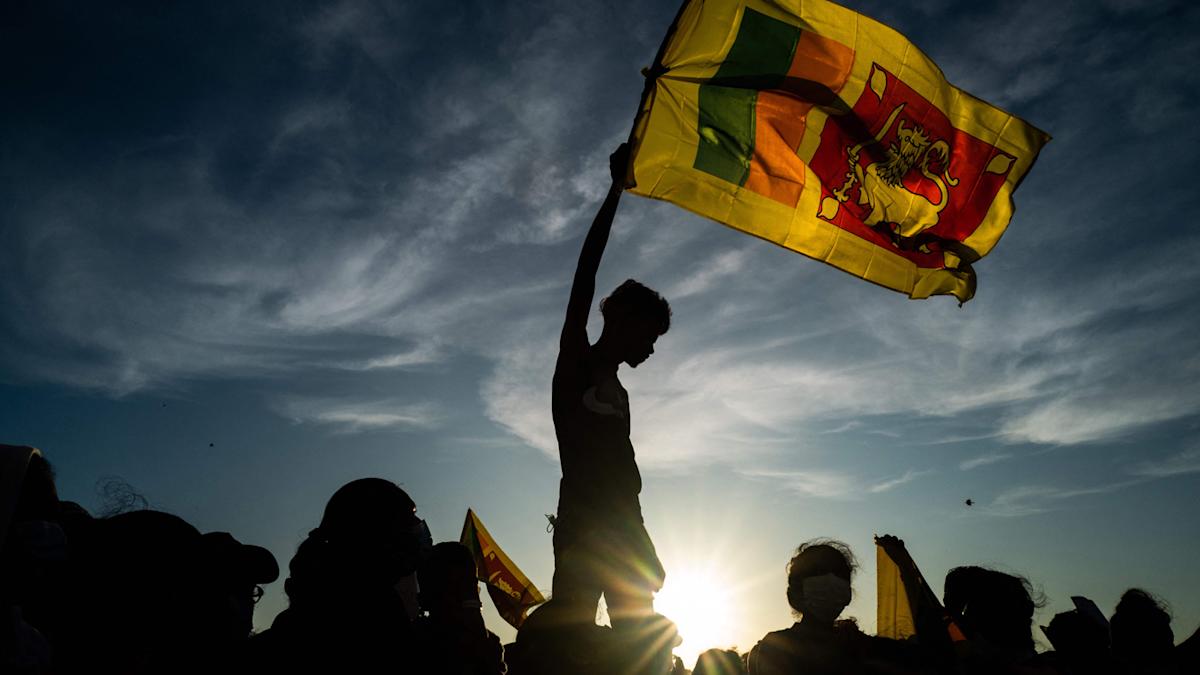In recent weeks, protests have erupted in the South Asian nation of Sri Lanka as the country’s economy remains on the brink of collapse. A lack of foreign reserves and the crippling national debt have caused fuel and food shortages, which in turn has led to demonstrations by frustrated residents.
More than 200 people have been wounded as a result of the clashes between government supporters and those calling for change, the BBC reported on Tuesday, and eight people are believed to have died, including one lawmaker. On Monday and Tuesday, Arson attacks destroyed more than 50 homes of government officials.
Why are people protesting?
Sri Lanka is facing its worst economic crisis since it gained its independence from Britain in 1948. A lack of foreign reserves has stalled the importation of fuel, medicines and food. Since March, Sri Lankans have been forced to wait in long lines to buy essential goods. Power cuts soon followed, due to a shortage of imported oil.
President Gotabaya Rajapaksa has blamed global issues, including the coronavirus pandemic and Russia’s invasion of Ukraine, for driving up the cost of fuel.
However, the country had long since endured economic difficulties. Rajapaksa came into power in 2019, months after Easter suicide bombings that killed 290 people. The attacks stunted the country’s tourism industry, which had brought in $4 billion in 2018. Rajapaksa told the population he would reverse the economic downturn, and days into his presidency he introduced a mix of sweeping tax cuts, said to be the largest in the nation’s history.
When did the protests begin?
On March 31, protesters demanded President Rajapaksa’s resignation after attempting to storm his home. On April 1, a state of emergency was declared in the capital, Colombo, and the city was placed under a curfew.
On April 2, another 36-hour curfew was imposed ahead of mass antigovernment protests. All 26 ministers in the government resigned on April 3, as protests escalated in the capital. Every government official in the Cabinet resigned except the president and his elder brother, Prime Minister Mahinda Rajapaksa. However, three other members of the powerful Rajapaksa family joined other lawmakers in resigning from their positions.
What has happened in recent days?
Protests turned deadly on Monday after five people, including a politician, were killed. Prime Minister Rajapaksa resigned in response, which failed to quiet protesters. Late that night, more than 50 homes linked to the ruling party were burned. The luxury holiday resort owned by the former prime minister was targeted, as well as the home of the former tourism minister, Sanath Nishantha. A museum dedicated to the father of the Rajapaksa brothers was also set ablaze.
The next day, the government ordered soldiers to open fire on anyone causing “harm to life” or seen looting public property. A police statement said that 38 houses and 47 vehicles had been set on fire across the country, Reuters reported. According to the BBC, the former prime minister has been moved to a secure naval base.
on wednesday, President Rajapaksa urged citizens to reject “racial and religious disharmony,” even though protesters taking part in the demonstrations are of all ethnicities and religions. Rajapaksa was defense minister in the later years of the country’s civil war, in which the Sinhalese majority defeated a rebel minority, the Tamil Tigers. After the war, which ended in 2009, he was accused of committing human rights violations as he crushed the separatist group. He has denied any wrongdoing.
US State Department spokesperson Ned Price told reporters in Washington, DC, that he was concerned by the deployment of the military and by reports of violence against peaceful protesters. He called for a full investigation into anyone who was involved in the acts of violence.
Cover thumbnail photo: Jewel Samad/AFP via Getty Images
